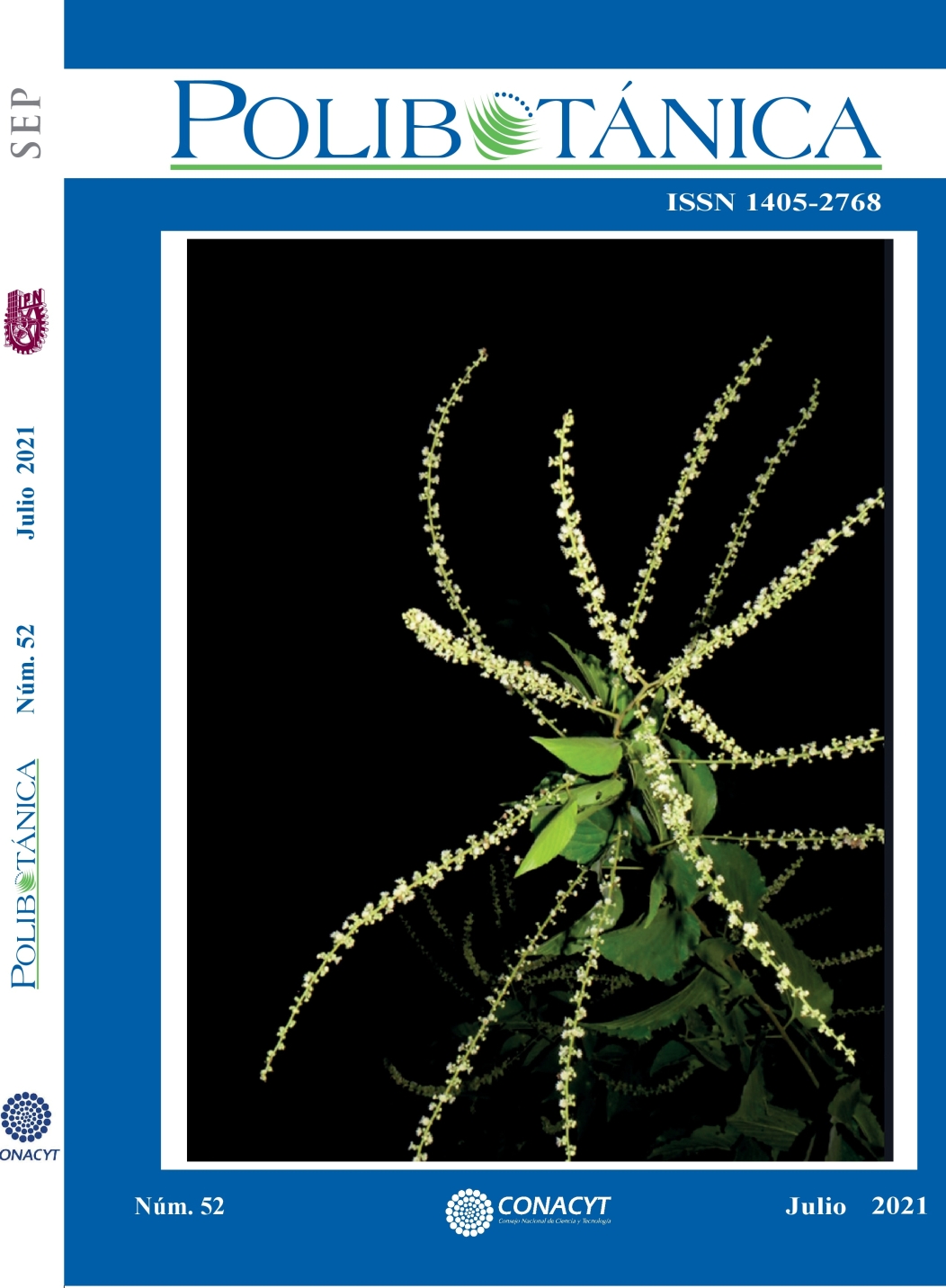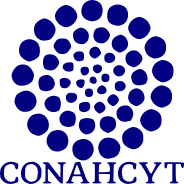Local uses and tradition: ethnobotanical study of usefel plants in San Pablo Cuatro Venados (Valles Centrales, Oaxaca)
DOI:
https://doi.org/10.18387/polibotanica.52.13Keywords:
Valles Centrales de Oaxaca, Etnobotánica, conocimiento tradicional, herbolariaAbstract
Oaxaca is a state with great natural and cultural wealth in which various researchers have set their eyes for the development of their studies. Among them there is the documentation of traditional knowledge in different areas, social, gastronomic, spiritual or political, for which an ethnobotanical study was carried out in San Pablo Cuatro Venados, Zaachila, a municipality in the Central Valleys of this state, in order to document traditional knowledge of the use, management and conservation of wild flora. In the present work, a description is made of the different types of plants that have been identified as useful. The data was collected from the application of semi-structured interviews and participant observation to collect information on the species; later botanical walks were carried out for the collection and subsequent identification of the specimens. A list of 97 species with direct use was obtained, which were classified into four categories: medicinal (52%), edible (20%), ornamental (12%) and tool use (9%). According to the botanical record of each species these were grouped into 44 families, the most frequent being Asteraceae with 40% of the species, followed by the Fabaceae family with 16% and Labiatae with 12%. Likewise, indicators were estimated with which the importance of the selected species in each of the categories was determined, and the most significant and those with the highest demand in direct use by the residents were delimited. In this way, the documentation of empirical knowledge is contributed, and its importance in the management and conservation of local biodiversity is highlighted.
References
Arriaga-Jiménez, A., Pérez-díaz, C., & Pillitteri, S. (2018). Ka’ux Mixe language and biodiversity loss in Oaxaca , Mexico. Region and Cohesion, 8(3): 127–143. https://doi.org/10.3167/reco.2018.080308
Bernal-Ramírez, L. A., Bravo-Avilez, D., Fonseca-Juárez, R. M., Yáñez-Espinosa, L., Gernandt, D. S., & Rendón-Aguilar, B. (2019). Usos y conocimiento tradicional de las gimnospermas en el noreste de Oaxaca, México. Acta Botanica Mexicana, 126(e1471): 1–24. https://doi.org/10.21829/abm126.2019.1471
Blancas, J., Casas, A., Pérez-salicrup, D., Caballero, J., & Vega, E. (2013). Ecological and socio-cultural factors influencing plant management in Náhuatl communities of the Tehuacán Valley , Mexico Ecological and socio-cultural factors influencing plant management in Náhuatl communities of the Tehuacán Valley , Mexico. Journal of Ethnobiology and Ethnomedicine, 9(39): 1–22.
Casas, A., & Parra, F. (2007). Agrobiodiversidad, parientes silvestres y cultura. Leisa Magazine, 23, 5–8.
CONABIO, C. N. para el C. y U. de la B. (2016). Estrategia nacional sobre biodiversidad de México (ENBioMex) y plan de acción 2016 - 2030.
Eguiarte, L. E. (2001). Reseña de “Hacia una etnobotánica mexicana y moderna” de B. Rendón Aguilar, S. Rebollar Domínguez, J. Caballero Nieto y M. A. Martínez Alfaro. Boletín de La Sociedad Botánica de México, 69:123–126.
Fernández, J. C., Aldama, A., & Silva, C. L. (2002). Conocimiento tradicional de la biodiversidad: conservación, uso sustentable y reparto de beneficios. Gaceta Ecológica, 63: 7–21. http://www.redalyc.org/articulo.oa?id=53906301
FIDA, F. I. de D. A. (2016). El valor de los conocimientos tradicionales. Los conocimientos de los pueblos en las estrategias de adaptación al cambio climático y la mitigación de este. https://www.ifad.org/documents/10180/673d9b5f-b286-4e5f-a544-62dae9450034
García Flores, J. C., Gutiérrez Cedillo, J. G., Baldera Plata, M. Á., & Juan Pérez, J. I. (2019). Análisis del conocimiento ecológico tradicional y factores socioculturales sobre huertos familiares en el Altiplano Central Mexicano. Cuadernos Geográficos, 58(3): 260–281. https://doi.org/http://dx.doi.org/10.30827/cuadgeo.v58i3.7867
Goodman L. (19961). Snowball sampling. Annals of mathematical statistics. Ithaca, United States of America, p. 32:148-170.
Jasso-Arriaga, X. (2019). Principio de conservación: coexistencia entre diversidad de especies comestibles y conocimiento tradicional. Polibotánica, 46, 179–199. https://doi.org/10.18387/polibotanica.47.13
López-Gutiérrez, B. N., Pérez-Escandón, B. E., & Villavicencio Nieto, M. Á. (2014). Aprovechamiento sostenible y conservación de plantas medicinales en Cantarranas, Huehuetla, Hidalgo, México, como un medio para mejorar la calidad de vida en la comunidad. Botanical Sciences, 92(3): 389–404.
Luna-José, A. D. L., & Aguilar, B. R. (2012). Traditional knowledge among Zapotecs of Sierra Madre Del Sur, Oaxaca. Does it represent a base for plant resources management and conservation? Journal of Ethnobiology and Ethnomedicine, 8(24), 1–13. https://doi.org/10.1186/1746-4269-8-24
Luna-José, A. de L., & Rendón-Aguilar, B. (2008). Recursos vegetales útiles en diez comunidades de la Sierra Madre del Sur, Oaxaca, México. Polibotánica, 26: 193–242.
Manfredo, M. J., Teel, T. L., & Dietsch, A. M. (2016). Implications of human value shift and persistence for biodiversity conservation. Conservation Biology, 30(2): 287–296. https://doi.org/10.1111/cobi.12619
Martínez-Cortés, M., Manzanero-Medina, G. ., & Lustre-Sánchez, H. (2017). Las plantas suculentas útiles de Santo Domingo Tonalá, Huajuapan, Oaxaca, México. Polibotánica, 0(43): 323–348. https://doi.org/10.18387/polibotanica.43.14
Martínez-Pérez, A., López, P. A., Gil-Muñoz, A., & Cuevas-Sánchez, J. A. (2012). Plantas silvestres útiles y prioritarias identificadas en la Mixteca Poblana, México. Acta Botanica Mexicana, 98: 73–98.
Millán-Rojas, L., Arteaga-Reyes, T. T., Moctezuma-Pérez, S., Velasco-Orozco, J. J., & Arzate-Salvador, J. C. (2016). Conocimiento ecológico tradicional de la biodiversidad de bosques en una comunidad Matlatzinca , México. Ambiente y Desarrollo, Bogotá (Colombia), XX(38): 111–123. https://doi.org/10.11144/Javeriana.up14-4.ayd20-38.cetb
Ordóñez, M. de J., & Rodríguez, P. (2008). Oaxaca, el estado con mayor diversidad biológica y cultural de México, y sus productores rurales. Ciencias, 91: 54–64. http://www.ejournal.unam.mx/cns/no91/CNS091000009.pdf
Pardo de Santayana, M., & Gomez Pellon, E. (2003). Etnobotánica: aprovechamiento tradicional de plantas y patrimonio cultural. Anales Del Jardín Botánico de Madrid, 60(1): 171–182.
Toscano Gonzáles, J. Y. (2006). Uso tradicional de plantas medicinales en la vereda de San Isidro, municipio de San José de Pare-Boyacá: un estudio peliminar usando ténicas cuantitativas. Acta Biológica Colombiana, 11(2): 137–146.
Valdés-Cobos, A. (2013). Conservación y uso de plantas medicinales: el caso de la región de la Mixteca Alta Oaxaqueña, México. Ambiente y Desarrollo, 17(33): 87–99.
Downloads
Published
Issue
Section
License

Polibotánica by Departamento de Botánica de la Escuela Nacional de Ciencias Biológicas del Instituto Politécnico Nacional se distribuye bajo una Licencia Creative Commons Atribución-NoComercial-CompartirIgual 4.0 Internacional.




















